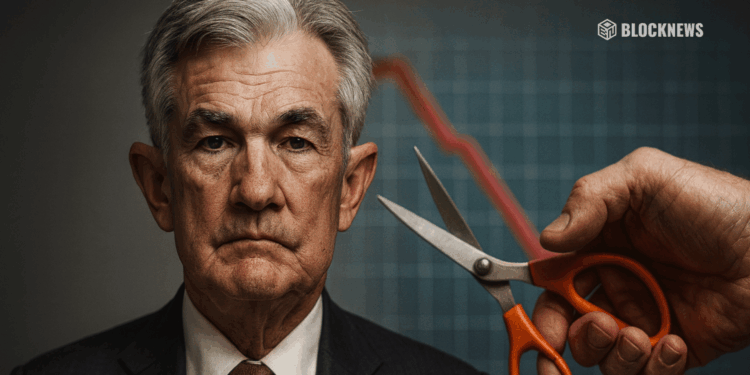- The BLS cancelled the October jobs report due to missing survey data from the shutdown.
- Rate-cut odds for December plunged as traders reassessed Fed policy without key indicators.
- Markets wavered, highlighting how much uncertainty missing data now introduces.
The U.S. Bureau of Labor Statistics delivered a major shock on Wednesday, announcing that the delayed October jobs report will not be released at all. The agency said it was unable to collect critical household survey data due to the historic government shutdown that stretched through October and early November. The cancellation removes a key economic indicator at a moment when both inflation and employment trends are under intense scrutiny.

Rate-Cut Odds Sink as Investors Lose Key Policy Signal
Following the announcement, the probability of the Federal Reserve cutting rates by another 25 basis points in December dropped sharply. Market expectations fell to 36.2%, down from 50.1% just a day earlier and 62.9% a week ago. Without the jobs data, uncertainty around the economic outlook has widened, and traders are now forced to price in a broader range of scenarios heading into the final FOMC meeting of the year.
Market Voices Warn of a Growing Visibility Problem
Palantir CEO Alex Karp underscored the market’s vulnerability, stating that when a single cancelled data release can move expectations so dramatically, it exposes how dependent investors have become on scheduled reports rather than deeper structural signals. He noted that with less transparency and fewer guideposts, policymakers and traders are effectively operating with “less light in the room,” increasing volatility around every macro decision.
Pressure Builds on the Fed as Both Mandates Show Strain
The Fed has already cut rates by a combined 50 basis points across September and October as rising unemployment and sticky inflation challenged both sides of its dual mandate. With the shutdown delaying major releases and the October report now abandoned, the central bank is navigating uncertain terrain. Market participants increasingly believe that the lack of reliable indicators will make the Fed cautious about further easing heading into 2026.

Wall Street Reacts Then Stabilizes After Brief Shock
The initial market response was swift, with major indexes briefly giving up all intraday gains before stabilizing. Stocks have since turned mixed, reflecting the broader uncertainty surrounding the path of interest rates. Equity traders now await the next batch of economic figures, but with the shutdown’s ripple effects still unfolding, the fog around U.S. macro conditions is unlikely to lift quickly. Here is where investors now find themselves — navigating an economy missing some of its most critical signals.














